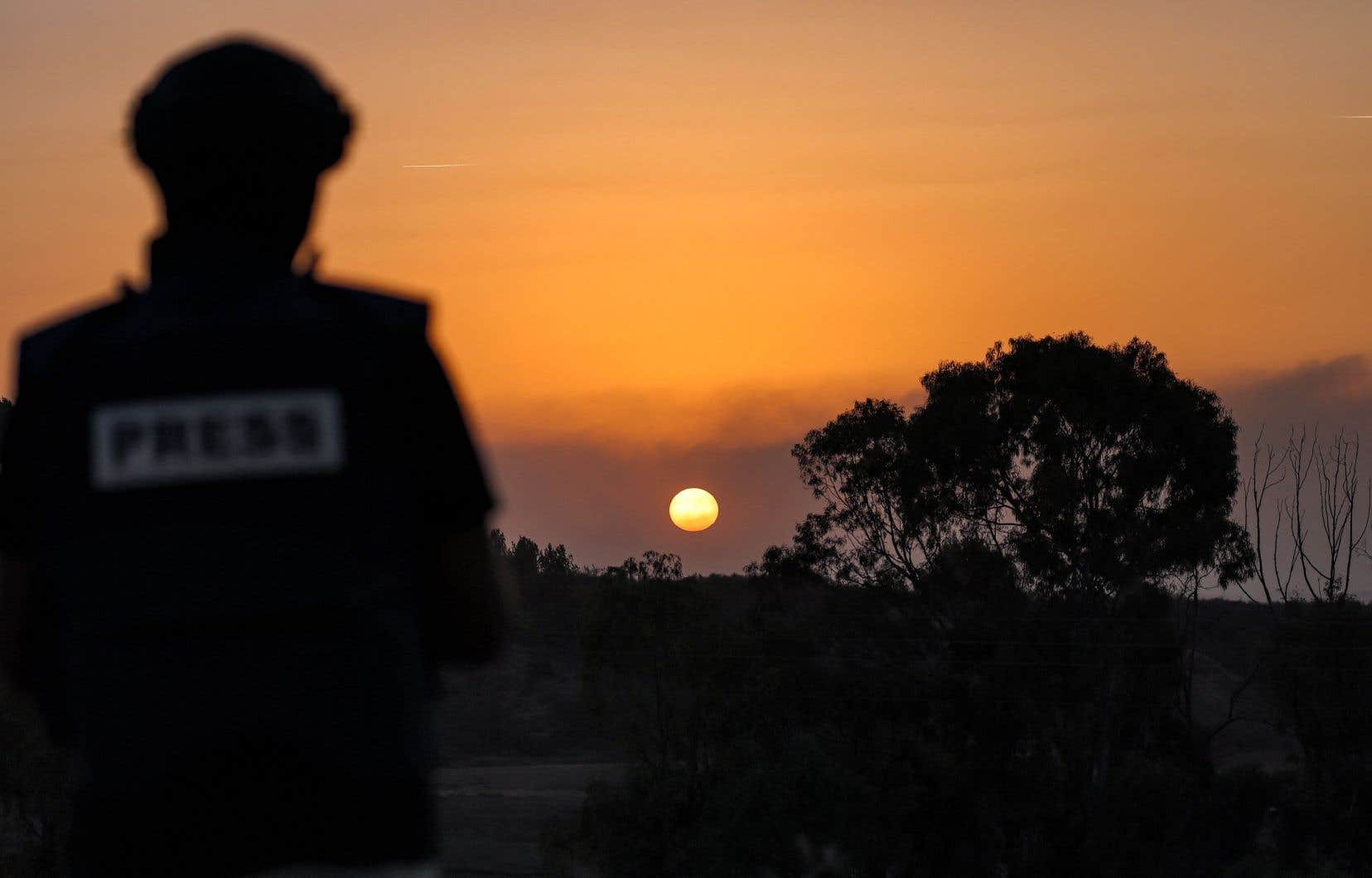In Gaza, journalists pay a heavy price to cover the war between Hamas and Israel: women or men, they are Palestinian, their families survive in the narrow bombed territory and dozens of them have already died there.
Whether they are correspondents for Palestinian or foreign media, their daily life is more or less that of the 2.4 million Gazans subjected to incessant assaults and the blockade of the Israeli army, suffering from the lack of everything – warm clothing, food, fuel , etc.
Whatever. “Our job is to document the war, to let the world know what is happening,” proclaims Hind Khoudary, a Gazan journalist.
But every day is “a question of life and death,” says photojournalist Motaz Azaiza.
The NGO Committee to Protect Journalists puts the number of Palestinian media professionals at at least 64 as of December 18 — journalists, photographers, camera operators, technicians, drivers, etc. — killed in the Gaza Strip since the start of the war on October 7.
Four Israeli journalists have also lost their lives since that date, in the Hamas attack on their kibbutz, and three Lebanese.
Some died in the bombings, at home, with members of their family. Others, while doing their job: according to the NGO Reporters Without Borders (RSF), at least 17 journalists lost their lives, pen in hand, camera in hand.
This is the heaviest toll in a conflict over such a short period for at least three decades, explains the NGO.
The attack of unprecedented scale carried out on October 7 by Hamas commandos in Israel left 1,139 dead, according to official data. The war immediately declared by Israel on Hamas in Gaza left more than 19,453 dead, according to the latest report from the territory’s Ministry of Health.
Grief
Like 1.9 million Gazans, Hind Khoudary had to flee. With the fighting on the ground intensifying, she resigned herself to abandoning her home and office. “A piece of my heart”, which she is convinced she will never see again.
Between her first departure to al-Shifa hospital, the largest in Gaza, and then her “grueling” walk south to Rafah, near the closed border with Egypt, she never stopped documenting “ the horrors” of war on social networks.
Helmet and bulletproof vest bearing the “press” logo, photojournalist Motaz Azaiza is another face of the daily life of Gazans trapped in the war.
Followed by more than 17 million subscribers, he captures through his photos and “live broadcasts” the distress of the displaced, without remaining silent about his own “despair”.
During his reports, he often finds himself pulling bodies out of the rubble or transporting children to the few operational hospitals.
All the journalists interviewed – including those from AFP – have buried a loved one.
While commenting on images from a hospital, Wael Dahdouh, head of Al-Jazeera’s Gaza bureau, learned live of the death of his two children and his wife in an Israeli strike on October 25.
“My greatest fear has never been doing my job but losing my loved ones,” the correspondent for the Qatari channel commented soberly to AFP.
On December 15, he himself was injured in the arm by shrapnel. His cameraman, Samer Abou Daqa, did not survive the strike.
The Israeli army told AFP that it never “deliberately” targeted journalists.
Censorship
In addition to the war, we have to deal with the restrictions imposed by Hamas, in power since 2007 in Gaza.
More complicated “under Hamas, the practice of journalism has changed considerably compared to the situation under the Palestinian Authority,” testifies Adel Zaanoun, an AFP journalist for nearly 30 years.
While allowing journalists in the past to attend maneuvers, the armed Islamist movement has imposed total censorship on its operations since the start of the war.
“Hamas does not generally oppose coverage of Israeli military operations, but has completely prohibited coverage of its own military activities, particularly those concerning its military posts, weapons and tunnels,” explains the journalist.
The movement, classified as a terrorist organization by the United States, the EU and Israel, also prevents journalists from looking into “corruption within its government or its movement” and “does not tolerate any criticism on social networks” .
On the ground, to obtain information, it is necessary to establish links with members of Hamas, who are very cautious with the foreign press, according to the Palestinian journalist.
“At the end”
In Gaza, as the fighting intensifies, journalists take turns breaking down.
Mourning, lack of sleep, absence of protective equipment, come up in the testimonies collected by AFP.
If everyone, on a daily basis, looks for gas or wood to bake bread or heat themselves, journalists absolutely need electricity to recharge phones, cameras, computers. But often the electricity grid is out of service and communications cut.
“By cutting off the Internet, the Israeli authorities are preventing journalists from working, it is an attack on the right to information,” denounces Jonathan Dagher, RSF head for the Middle East.
On the 74th day of the war, Adel Zaanoun, an AFP journalist, is “at the end of his rope”. His only wish: to “shelter his family” on the other side of Rafah, where there is no war.
